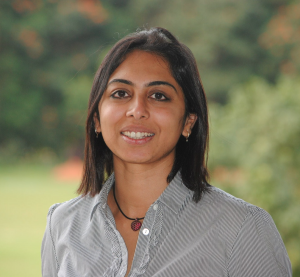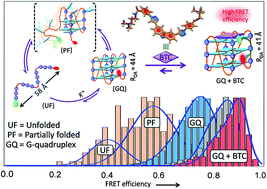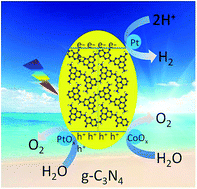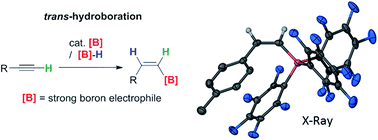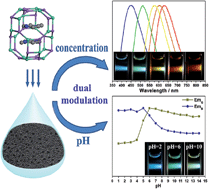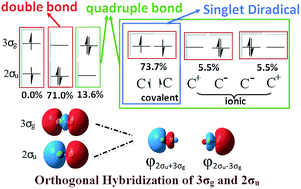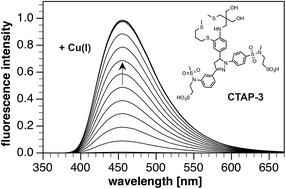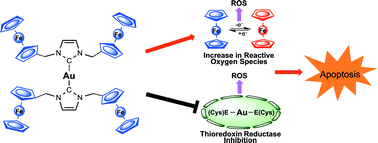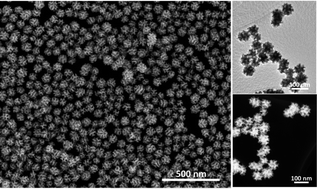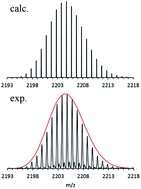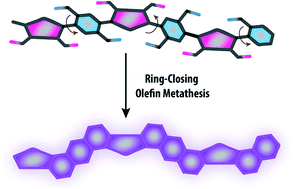The 25 most-downloaded Chemical Science articles in the fourth quarter of 2015 were as follows:
Reversible photo-induced trap formation in mixed-halide hybrid perovskites for photovoltaics
Eric T. Hoke, Daniel J. Slotcavage, Emma R. Dohner, Andrea R. Bowring, Hemamala I. Karunadasa and Michael D. McGehee
Chem. Sci., 2015, DOI: 10.1039/C4SC03141E, Edge Article
Evaluating metal–organic frameworks for natural gas storage
Jarad A. Mason, Mike Veenstra and Jeffrey R. Long
Chem. Sci., 2014, DOI: 10.1039/C3SC52633J, Perspective
Macrocycles: lessons from the distant past, recent developments, and future directions
Andrei K. Yudin
Chem. Sci., 2015, DOI: 10.1039/C4SC03089C, Perspective
Rethinking the term “pi-stacking”
Chelsea R. Martinez and Brent L. Iverson
Chem. Sci., 2012, DOI: 10.1039/C2SC20045G, Perspective
From themed collection Physical Chemistry
Characterizing chain processes in visible light photoredox catalysis
Megan A. Cismesia and Tehshik P. Yoon
Chem. Sci., 2015, DOI: 10.1039/C5SC02185E, Edge Article
Sulfonyl fluorides as privileged warheads in chemical biology
Arjun Narayanan and Lyn H. Jones
Chem. Sci., 2015, DOI: 10.1039/C5SC00408J, Perspective
Dialkylbiaryl phosphines in Pd-catalyzed amination: a user’s guide
David S. Surry and Stephen L. Buchwald
Chem. Sci., 2011, DOI: 10.1039/C0SC00331J, Perspective
Thin metal nanostructures: synthesis, properties and applications
Zhanxi Fan, Xiao Huang, Chaoliang Tan and Hua Zhang
Chem. Sci., 2015, DOI: 10.1039/C4SC02571G, Minireview
Copper-catalyzed condensation of imines and α-diazo-β-dicarbonyl compounds: modular and regiocontrolled synthesis of multisubstituted pyrroles
Wei Wen Tan and Naohiko Yoshikai
Chem. Sci., 2015, DOI: 10.1039/C5SC02322J, Edge Article
Boron chemistry in a new light
Guillaume Duret, Robert Quinlan, Philippe Bisseret and Nicolas Blanchard
Chem. Sci., 2015, DOI: 10.1039/C5SC02207J, Minireview
Synthesis of high quality two-dimensional materials via chemical vapor deposition
Jingxue Yu, Jie Li, Wenfeng Zhang and Haixin Chang
Chem. Sci., 2015, DOI: 10.1039/C5SC01941A, Perspective
Aggregation-induced emission of siloles
Zujin Zhao, Bairong He and Ben Zhong Tang
Chem. Sci., 2015, DOI: 10.1039/C5SC01946J, Minireview
Computational design of molecules for an all-quinone redox flow battery
Süleyman Er, Changwon Suh, Michael P. Marshak and Alán Aspuru-Guzik
Chem. Sci., 2015, DOI: 10.1039/C4SC03030C, Edge Article
Designing logical codon reassignment – Expanding the chemistry in biology
Anaëlle Dumas, Lukas Lercher, Christopher D. Spicer and Benjamin G. Davis
Chem. Sci., 2015, DOI: 10.1039/C4SC01534G, Minireview
Carbon–hydrogen (C–H) bond activation at PdIV: a Frontier in C–H functionalization catalysis
Joseph J. Topczewski and Melanie S. Sanford
Chem. Sci., 2015, DOI: 10.1039/C4SC02591A, Minireview
C–H arylation and alkenylation of imidazoles by nickel catalysis: solvent-accelerated imidazole C–H activation
Kei Muto, Taito Hatakeyama, Junichiro Yamaguchi and Kenichiro Itami
Chem. Sci., 2015, DOI: 10.1039/C5SC02942B, Edge Article
A quantitative definition of hypervalency
Marcus C. Durrant
Chem. Sci., 2015, DOI: 10.1039/C5SC02076J, Edge Article
Molecular understandings on the activation of light hydrocarbons over heterogeneous catalysts
Zhi-Jian Zhao, Cheng-chau Chiu and Jinlong Gong
Chem. Sci., 2015, DOI: 10.1039/C5SC01227A, Perspective
Hydrogenation of carbon dioxide to methanol using a homogeneous ruthenium–Triphos catalyst: from mechanistic investigations to multiphase catalysis
Sebastian Wesselbaum, Verena Moha, Markus Meuresch, Sandra Brosinski, Katharina M. Thenert, Jens Kothe, Thorsten vom Stein, Ulli Englert, Markus Hölscher, Jürgen Klankermayer and Walter Leitner
Chem. Sci., 2015, DOI: 10.1039/C4SC02087A, Edge Article
Palladium-catalyzed reductive coupling of phenols with anilines and amines: efficient conversion of phenolic lignin model monomers and analogues to cyclohexylamines
Zhengwang Chen, Huiying Zeng, Hang Gong, Haining Wang and Chao-Jun Li
Chem. Sci., 2015, DOI: 10.1039/C5SC00941C, Edge Article
Amorphous molybdenum sulfide films as catalysts for electrochemical hydrogen production in water
Daniel Merki, Stéphane Fierro, Heron Vrubel and Xile Hu
Chem. Sci., 2011, DOI: 10.1039/C1SC00117E, Edge Article
Combination of Ru(II) complexes and light: new frontiers in cancer therapy
Cristina Mari, Vanessa Pierroz, Stefano Ferrari and Gilles Gasser
Chem. Sci., 2015, DOI: 10.1039/C4SC03759F, Perspective
Metal complexes as potential modulators of inflammatory and autoimmune responses
Chung-Hang Leung, Sheng Lin, Hai-Jing Zhong and Dik-Lung Ma
Chem. Sci., 2015, DOI: 10.1039/C4SC03094J, Perspective
Visualizing changes in mitochondrial Mg2+ during apoptosis with organelle-targeted triazole-based ratiometric fluorescent sensors
G. Zhang, J. J. Gruskos, M. S. Afzal and D. Buccella
Chem. Sci., 2015, DOI: 10.1039/C5SC02442K, Edge Article
Porous ionic liquids: synthesis and application
Shiguo Zhang, Kaoru Dokko and Masayoshi Watanabe
Chem. Sci., 2015, DOI: 10.1039/C5SC01374G, Minireview
Chemical Science is the Royal Society of Chemistry’s flagship journal, publishing research articles of exceptional significance and high-impact reviews from across the chemical sciences. It has been gold open access since January 2015.
Submit your exceptional research to Chemical Science today!
Stay up to date with Chemical Science
Be among the first to hear about the newest articles being published – Sign-up to our journal news alert to receive information about most read articles, journal news, as well as calls for papers and invitations.
Comments Off on Top 25 Chemical Science articles October–December 2015













 Inspired by foams in everyday products such as food, researchers in the UK have developed a way to form extremely stable temperature-sensitive air-in-oil foams.
Inspired by foams in everyday products such as food, researchers in the UK have developed a way to form extremely stable temperature-sensitive air-in-oil foams.